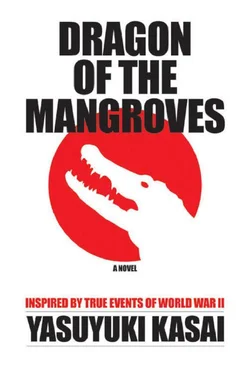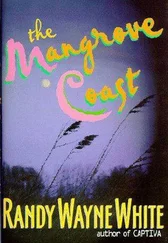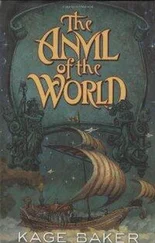The regiment HQ had chosen the narrowest strait between Ramree Island and the continent as a ferry point and had dispatched both landing barges and the domestic fishing boat flotilla led by the liaison noncommissioned officer there. As far as he knew, each operation had been to gather the garrison temporarily around a hamlet called Lamu, approximately forty kilometers north of Taungup.
There was no other way to evacuate one battalion at a time. And the opponent must have known it well. As a matter of fact, the enemy had gotten ready with gunboats and rubber rafts equipped with outboard motors exclusively for patrol.
The enemy had known the Japanese intentions before each rescue attempt. If he were to stupidly take the same way, the result would be the same.
Sumi also thought the choice of rescue boats wasn’t right. A military landing barge surely had a good transport capacity, but it was so conspicuous that enemy spies would easily spot it. What about a domestic fishing boat? These were usually small, wooden boats used by those living in mangrove areas as everyday transportation. The Japanese called this kind of boat a “sampan.” He wondered if he could collect sampan as the liaison NCO had done.
But that won’t work because it’s slow, he told himself. It might be good for navigating through marshlands, but, once an enemy finds it, escape will be next to impossible. He also knew Japanese engineers on the continental side did not have outboard motors available for small boats.
He returned to the coast road deep in thought. He found an officer napping under one of palms along the road. Sumi recognized him as Second Lieutenant Okada, Sumi’s colleague and First Platoon commander, who had arrived there earlier. To organize a party from Second Platoon, Sumi would have to entrust Okada with the rest of his men.
“Hey, wake up. I need a favor,” Sumi said as he nudged Okada’s shoulder.
Okada kept sleeping happily. Both men were platoon commanders of the same company. Sumi blew a fuse and kicked Okada hard in the buttocks.
“Ouch! What the hell are you doing?” Okada snapped, springing to his feet.
“Are you crazy? Why did you wake me up?” Okada had worked day and night and was also tired. Sumi realized this and apologized.
“Forgive me. I kicked you too hard,” he said. Then he proceeded to explain the situation.
When Sumi finished, Okada rubbed his buttocks and said, “OK, I got it. Tell your remaining sarge to see me before we move. I’ll take command of your men.
Don’t worry. How are the ships for Ramree?”
“I don’t know,” Sumi replied, “but I think HQ is also at a loss about what move to make. Nobody tells me anything about how to make it. I’m glad they were general directions, but I’m stuck on how to collect the ships.”
“If I were you, I would use Burmese fishing boats,” Okada said.
“A sarge of Second Battalion has tried it already. And I heard he failed. Maybe the boats were too slow.”
“Maybe it was a tiny flatboat or a sampan. How about a legitimate fishing boat used for offshore fishery? Some fishermen in Taungup have some fair boats.
They have hot-bulb engines, at least. Some even have diesel engines.”
“A diesel engine? Really?”
“Yeah, I’ve seen one with a diesel,” answered Okada.
“Sounds reliable.”
“Exactly. Maybe it can even run away from a destroyer.”
Taungup was a fishing village. Sumi had seen a wide variety of fishing boats moored along the Taungup River, which was about a hundred meters wide.
Open-air bazaars used to be held there often, and fresh fish were available on the streets. Okada likely came from a fishing village and was indifferent to Sumi’s admiration.
“What is the name of your Burmese soldier?” Okada asked. “Pondgi? Right?
I’ve heard the boy came from Sandoway. That’s a fishermen’s town, too. Maybe he has some acquaintances here. Go and ask him.”
Sumi felt hope rising inside. He took his notebook out of his pocket and ana-lyzed the information. He noticed the action report of the Cheduba Sentry Party, led by Second Lieutenant Motoyama, who had splendidly succeeded in breaking through the blockade.
Four small islands named Sagu, Magyi, Tai, and Ye are scattered on the Heywood Channel, south of Ramree and east of Cheduba. The Motoyama Party made Taungup by going northward past Ye, Tai, and Sagu, in that order, about two weeks before. Of course, this area wasn’t safe; the enemy had actually landed on Sagu on January 29. But there was no Japanese garrison on those islands at the time. The enemy captured both Cheduba and Sagu without bloodshed—surely an anticlimax for the bloodthirsty ones. So there was no wonder even if the enemy had been off their guard around the Heywood Channel when Motoyama and his men had been breaking through.
For the Twenty-Sixth Indian Division, it became clear that the Japanese Imperial Navy was busy coping with the Philippine front. The Japanese Army on the continental side had no heavy guns to bombard the island directly. And the garrison it was fighting was already on its deathbed. The only alerts were for the sporadic air raids by the Fifth Japanese Air Division, which was running short of planes.
These facts allowed Sumi to note that the enemy presence in the Heywood Channel was diminishing, if it was there at all. The successful return of the Motoyama Party seemed to prove it.
Gradually, a plan took shape.
It might work to go west on the Heywood Channel from Taungup on high-speed fishing boats and then run south of Magyi Island to pretend to head for the ocean. After sailing past the uninhabited Tai Island, he would turn northward and rush toward the Cheduba Strait, which lay between Ramree and Cheduba. And eventually, he’d land on the Cape of Amou, the southernmost tip of Ramree Island.
Enemy flotillas seeking to hinder Japanese evacuation would float in the narrow water pathways dividing the island from the mainland, he reasoned. Creeks there named Madegyun, Myinkhon, and Kalaidaung were attacked indiscriminately when anything whatsoever approached there.
Nevertheless, many local fishermen were working on the Heywood Channel, although some quit in fear of war. Most of them probably had to make up for losses caused by storms during the rainy season.
If Sumi could disguise his soldiers as Burmese fishermen and hitch a ride on a boat, he could approach the island from the south and make land under cover of darkness. In case of emergency, the speed of a diesel engine would be critical.
Having determined his plan, Sumi took a full breath and looked up the sky.
The time was well after ten o’clock.
February is the dry season in Burma. The climate reminded him of early summer in Japan. Though the air was rather comfortable compared with the other seasons, it was scorching during midday. When he arrived in the jungle, the soldiers of Second Platoon had been resting in the shadows of trees. Sumi gathered them and called Sergeant Kokichi Shimizu, the Second Squad Leader.
Shimizu was a muscular noncommissioned officer who had risen through the ranks. He often bullied recruits, acting big because of his rank. Although he was notorious among soldiers, Shimizu was one of the precious veterans with enough combat experience for the newly embodied reconnaissance regiment. However, he often locked horns with others. He was too much for the younger Sumi.
Sumi had another NCO in charge of First Squad, a good-natured man who was far easier to deal with. But he had unfortunately developed malaria, and, being unsteady on his feet, he seemed useless. So Sumi had no choice but to appoint Shimizu as a vice-commander.
Next Sumi called Pondgi and asked if he could get any fishing boats, as suggested by Second Lieutenant Okada. Pondgi said he could. Sumi ordered him to make arrangements right away and handed Pondgi all the scrips he had.
Читать дальше












